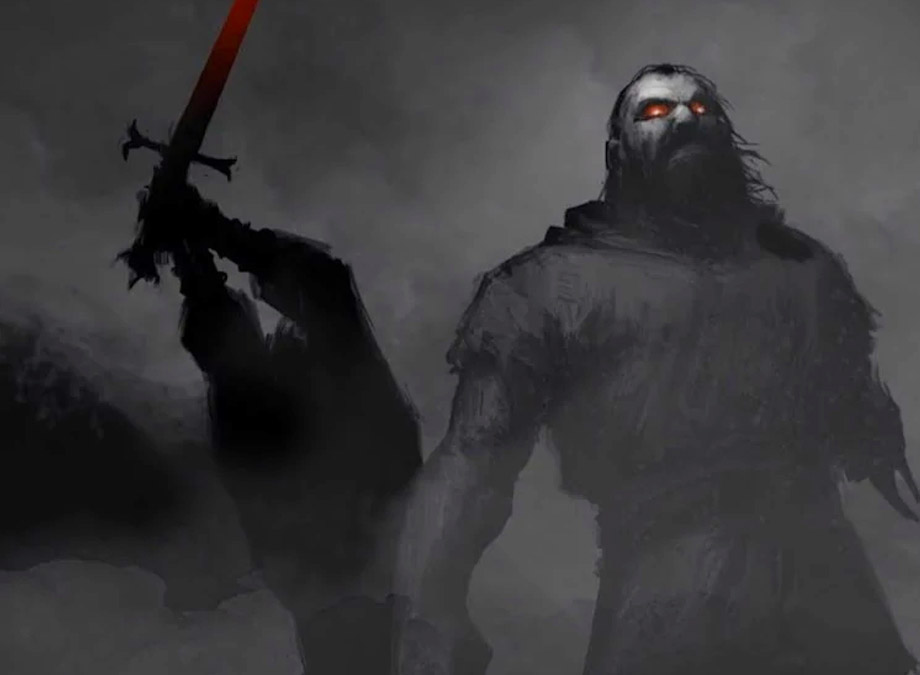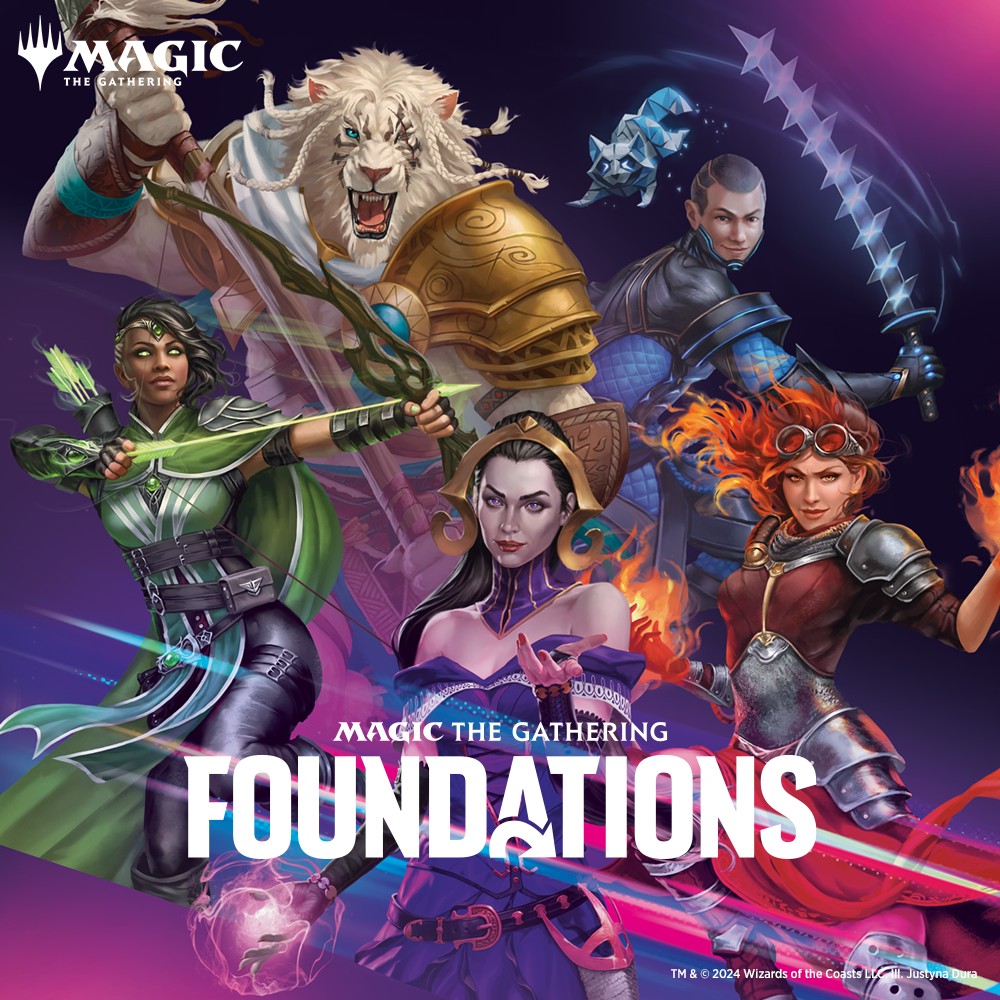Bhaal.
For some of you, just by reading the name you have summoned mental images. Perhaps it’s the mental image of a symbol, a skull surrounded by drops of blood. Or maybe that image is burned into the stones of a bridge, or drawn in blood on a wall, or sits adorning the front of a box.
Or are you imagining a hero, or a villain, one of your own creation? Perhaps you have imagined a great monster, ready to tear your foes apart. Or a bearded man with stringy black hair, pale skin, and blood-red eyes.
And so we come to the most famous of the Dead Three. While Myrkul has been forgotten by many in Faerun and in the planes beyond, and most know of Bane, even those unfamiliar with D&D as a game may know of Bhaal.
Or, as he’s known, the Lord of Murder.
Welcome to Lore-Win, the Dungeons and Dragons lore series. I, as always, am your humble Loremaster, Sokar. Today we’ll be delving into the last of the Dead Three, Bhaal. But Bhaal’s influence expands beyond just his actions as a divine, and his adventures as a mortal. And so we may have to dig a little deeper for today’s article.
Throne of Blood
By now I have covered the ascension of the Dead Three twice already. So, if you’d like to learn more, you can read about the experience from Bane or Myrkul’s perspective. But, just in case you need a reminder, I’ll give a brief summary.
Bane, Bhaal, and Myrkul were a trio of evil adventurers seeking out divine power. To this end, they went on adventures, led armies, and even killed a primordial. Eventually, they fought their way to the Grey Waste of Hades to confront the god of death, Jergal.
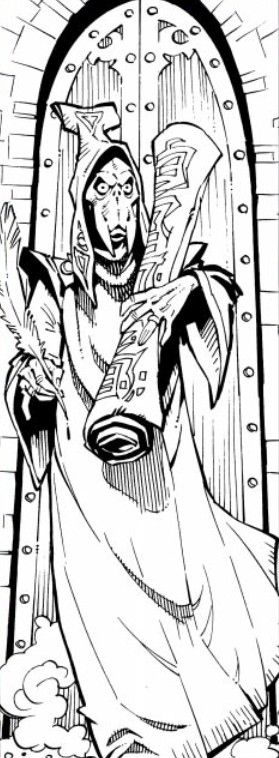
An avatar of Jergal carrying a scroll.
Source: Netheril: Empire of Magic (2e)
Little did the three know that Jergal had grown tired of his throne. When the three evil adventurers fought their way through the undead outside, they came to threaten him. To their surprise, Jergal gave his power up willingly, and asked who would take his place.
When the three fell to infighting, Jergal proposed an alternative: they play a game for it. At first, they chose to bowl skulls, but this game was interrupted. Then, they played knucklebones, or jacks, with actual bones.
Bane was the winner, and chose to inherit the divine portfolio of strife. He believed it would give him the power to take over Toril. Myrkul came second, and chose to rule over the dead. Thus, Myrkul would rule over Bane’s minions after they died. Bhaal chose to take the divine portfolio of death. Thus, he could kill Bane’s minions, or starve Myrkul of power, at his choice.
And so the Dead Three ascended to godhood.
Bhaal’s church took on the form of a disordered group of local hierarchies. However, as disorganized as they may have been, some aspects of worship remained the same. Namely, that clerics of Bhaal were expected to commit murder at least once a tenday. Or, once every ten-day week.
Yes, seriously. That's so much murder!
Clerics of Bhaal were to commit this heinous deed in the darkest moment of the night. Of course, Bhaal’s clerics believed murder to both be a sacred duty, and a fun pastime.
Probably not the kind of clerics you really want in your party, if I’m being honest.
The leader of a Bhaalist (or Bhaalyn) cult was known as the High Primate or Primistress. Likewise, the leader of a singular temple within the cult was the Primate of Primistress. These had an assistant known as the First Murder they could call upon, who in turn could call upon the nine most senior members of the clergy. These nine were known as the Cowled Deaths.
Over the course of his divinity, Bhaal attempted to seize the Moonshae Isles as his personal domain. However, this effort was a failure and greatly weakened Bhaal after his avatar was slain in the attempt. Then, before he could regain his power, Bhaal was pulled down to the Material Plane with the other gods in the Time of Troubles.
There, Bhaal met his end. He was killed by the mortal Cyric, and his essence was absorbed. Cyric in turn became a god himself. Bhaal's urban cults turned their worship to this usurper god, while his rural cults largely continued their worship of the Lord of Murder. After all, they still received their spells, and so kept their faith.

Cyric as a god. Doesn't he look trustworthy?
Source: Faiths and Pantheons (3e)
Urban and rural cults entered into conflict as time went on, ambushing each other and killing one another. Though, not always. Some priests and priestesses of Bhaal who had the misfortune of being captured alive by cults of Cyric had torture to look forwards to instead.
Then, the magic stopped. Those priests who had remained loyal ceased receiving divine magic, and Bhaal’s worship faded. His faithful instead joined the ranks of the Cyric cults, or began to worship Bane’s son, Xvim.
The Bhaalspawn
Yet, like many gods, Bhaal had foreseen his demise.
And like many who know of their deaths, he plotted a way to escape his fate.
So the Lord of Murder had sired his own children. But unlike Bane who had but one child, Bhaal had many.
Each of whom held a modicum of his essence. And when they died, Bhaal’s essence would be freed and he would be reborn. Bhaal’s original plan saw this happening on a short timeline. His worshipers were to bring the Bhaalspawn together and sacrifice them. All of them, all at once.
But this plan was thwarted by the Harpers.
The secret organization of do-gooders struck the Bhaalists. Among the Harpers who raided the ceremony was a wizard named Gorion. The Harpers killed the Bhaalists and worked to get the Bhaalspawn infants adopted.
Gorion himself took in one of the children and raised them as his own. This Bhaalspawn in particular went on a slew of adventures of their own.
Now, at this moment I have to speak of canon again. In the Forgotten Realms canon, this Bhaalspawn was named Abdel Adrien. However, for any of you who have experienced Baldur’s Gate, know that your Bhaalspawn is valid.
For that reason, I shall describe the events of the Bhaalspawn Crisis in general, but avoid describing the central figure involved in any real depth.
Gorion took his Bhaalspawn ward to his home of Candlekeep, a library fortress along the Sword Coast. He also brought another Bhaalspawn, a human girl named Imoen there, and watched over the two as they grew up. However, other Bhaalspawn began to learn of their divine heritage and set plots into motion to claim godhood, just as Bhaal had once done.
One of these was Sarevok, the adopted son of the leader of a mercantile group known as the Iron Throne. The Iron Throne had plans to escalate tensions between Baldur’s Gate and Amn while sabotaging local iron supplies in order to make a killing by selling their own iron at a premium. However, Sarevok wanted more. He wanted to become a god, and what better way to become God of Murder than lead a war?
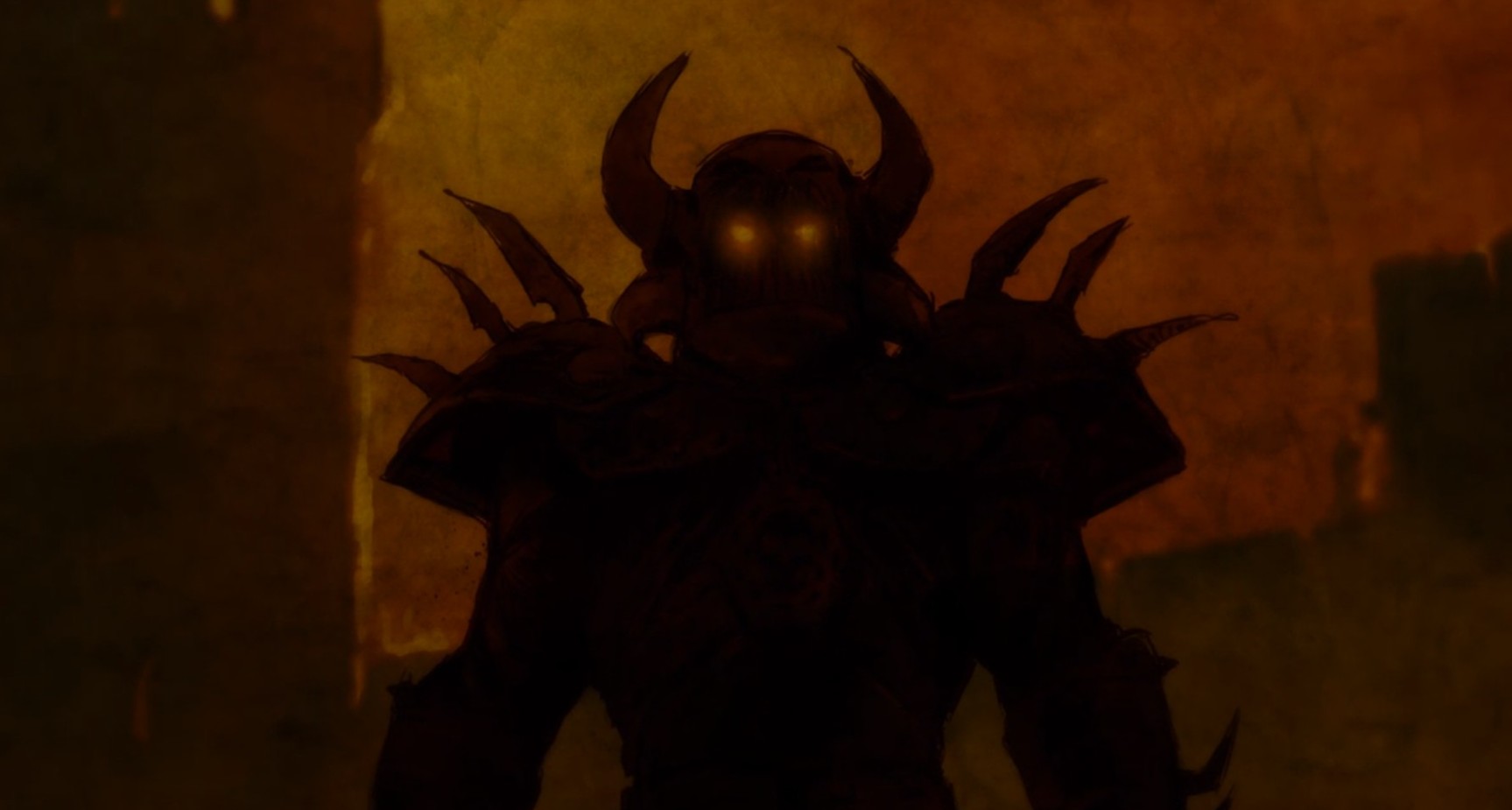
Sarevok. You can tell he's evil because of all the spikes.
Source: Baldur's Gate: Siege of Dragonspear
At the same time, he hunted down his divine siblings. When his path brought him into conflict with the Bhaalspawn though, it turned out to be more than Sarevok had planned for. The Bhaalspawn was able to thwart his plans to become a Grand Duke of Baldur’s Gate and take control of it to begin a war. Then the Bhaalspawn chased him down into the depths beneath the city, and slay him in an ancient temple of Bhaal.
Later, more and more Bhaalspawn began battling over their divine heritage. One group known as The Five caused a great deal of destruction as they sought to kill all their siblings. This, of course, drew them into conflict with Gorion’s ward.
And Gorion’s ward prevailed.
By now, Gorion’s ward was being guided by a solar, and had been forced to think about their own claim to divinity. Would they claim it at the end of the conflict and ascend to godhood? Or would they remain mortal? Perhaps they would give up all claims to Cyric?
The choice was theirs.
Bhaal Returned
Regardless of whether Gorion’s ward took up the throne, Bhaal did return. However, not as a god.
Like his allies Myrkul and Bane, Bhaal returned in a quasi-deity form. Trapped in the Material Plane. If you had Gorion’s ward ascend to the realm of the divine, perhaps he managed to reclaim some, not all, of his divine power.
Otherwise, well, the module “A Murder In Baldur’s Gate” provides another opportunity for Bhaal’s resurrection. Namely, the last two Bhaalspawn meeting and engaging in combat. That story went as you expect. One killed the other, was overcome by Bhaal’s power, and transformed into a monstrous form. Which was in turn killed.
Which then released the last of Bhaal's essence and paved the way for his return.
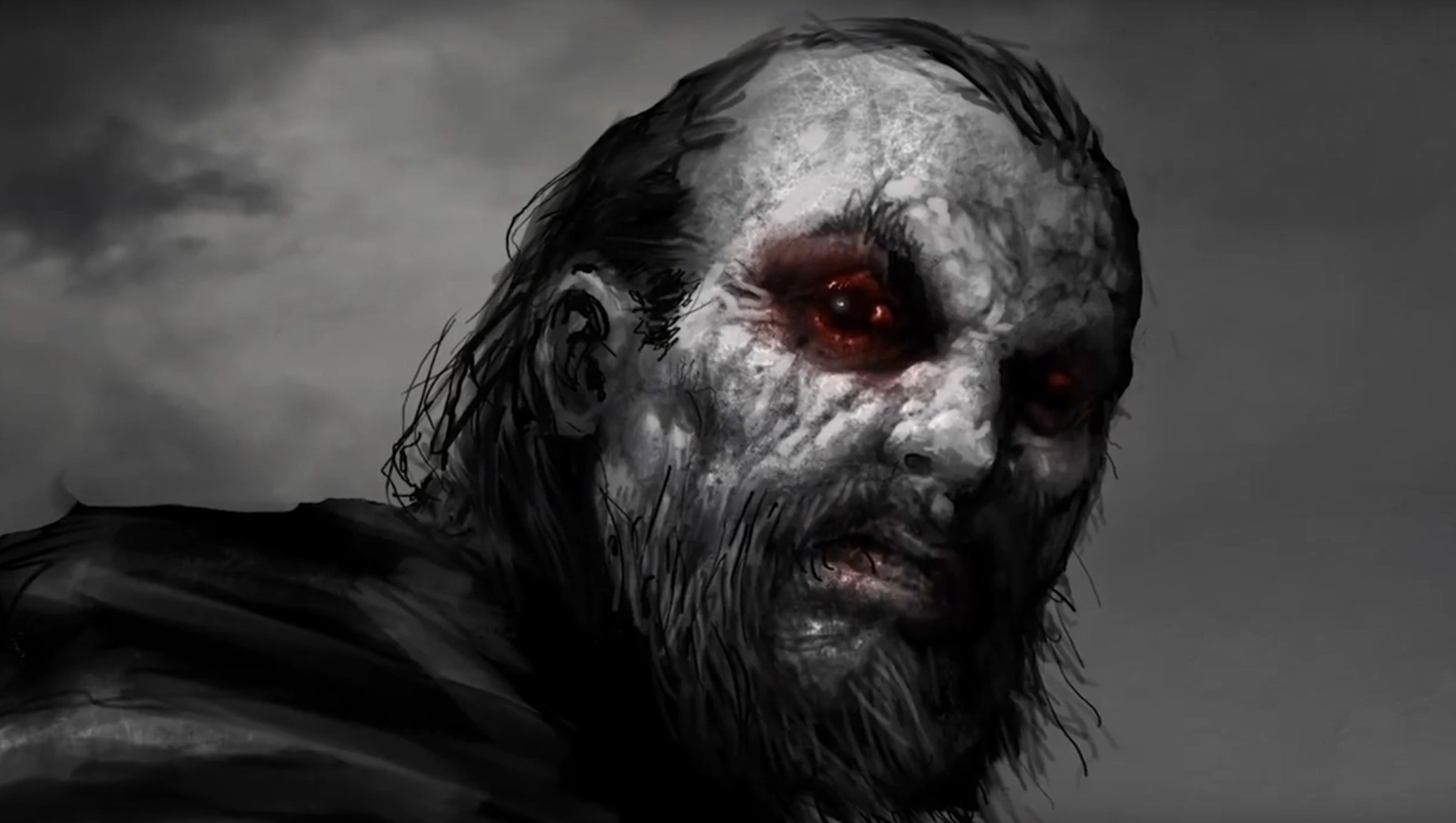
Bhaal. Ironically, moments before his death.
Source: Baldur's Gate: Siege of Dragonspear
Now revived, all the Dead Three wander the Material Plane. There, they plot and scheme, no doubt seeking to return to full divinity instead of merely wandering the realm aimlessly. As for what their plans may be…
Well, that’s up to your DM.
So, if you should ever encounter a trio of evil adventurers who seem just a bit too powerful, know that you may be dealing with gods in the flesh. Ones who would make the perfect opponents for a high level adventuring party.
Just saying.
I hope this article has taught you more of the Lord of Murder, and maybe even given you some ideas for a campaign villain. And remember, if you’re looking for supplies for your next campaign, be sure to grab them at the Tower!
Until next time, may all your rolls be crits!
-Loremaster Sokar

